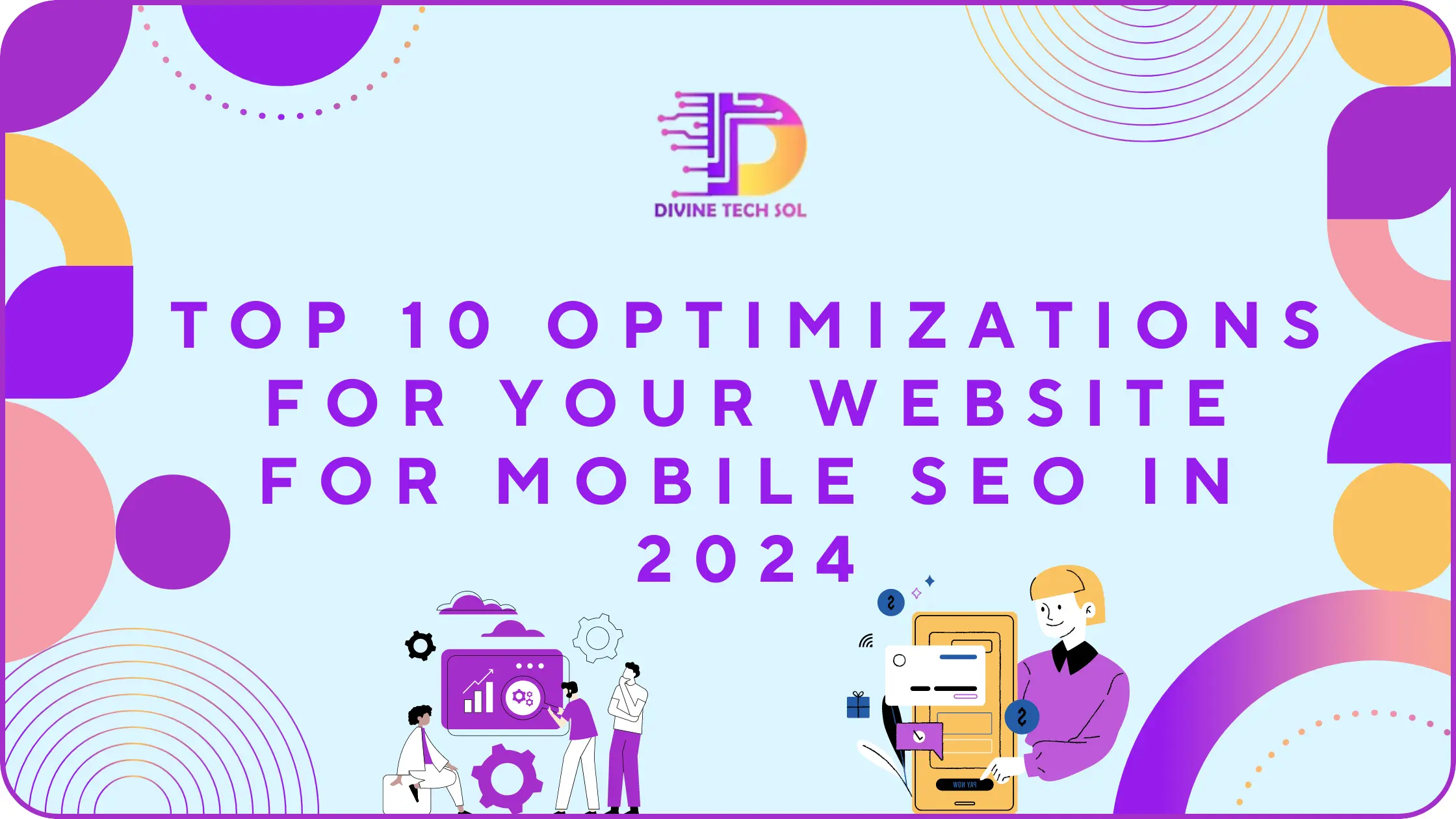
In today’s digital landscape, ensuring that your website is optimized for mobile devices is crucial for maintaining visibility, user engagement, and search engine rankings. As we move further into 2024, mobile SEO is more critical than ever before. With Google’s emphasis on mobile-first indexing, websites must prioritize mobile optimization to stay ahead of the competition. Below are the top 10 optimizations for your website for mobile SEO in 2024 that will help you deliver a fast, seamless, and user-friendly experience to your audience.
1. Implement a Responsive Web Design
Responsive web design is a non-negotiable aspect of mobile SEO. It ensures that your website automatically adjusts to fit any screen size, providing an optimal viewing experience across devices. A responsive design eliminates the need for separate mobile and desktop versions of your site, which can be cumbersome and harm your SEO. Google also favors responsive websites because they offer a consistent user experience, which is a significant ranking factor. Make sure your website uses a flexible grid layout and media queries to adapt to various screen sizes.

2. Optimize Your Website’s Load Speed
Load speed is a critical factor in both user experience and mobile SEO. Slow-loading websites frustrate users, leading to higher bounce rates and lower engagement, which can negatively impact your rankings. Google considers page speed as a significant ranking factor, especially for mobile searches. To optimize your load speed, compress images, minimize CSS and JavaScript files, leverage browser caching, and use a Content Delivery Network (CDN). Additionally, consider implementing lazy loading for images and videos to improve perceived load times.
3. Prioritize Core Web Vitals
Core Web Vitals are a set of metrics introduced by Google to measure user experience. They include Largest Contentful Paint (LCP), First Input Delay (FID), and Cumulative Layout Shift (CLS). For mobile SEO in 2024, it’s essential to optimize your website to meet these Core Web Vitals thresholds. Ensure your LCP is within 2.5 seconds, FID is under 100 milliseconds, and CLS score is below 0.1. Improving these metrics will not only enhance user experience but also boost your mobile search rankings.

4. Optimize for Voice Search
With the increasing use of voice-activated devices, optimizing your website for voice search is becoming more important. Voice search queries are typically longer and more conversational, so focusing on long-tail keywords and natural language processing is key. Structure your content to answer common questions directly, and use schema markup to provide context to your content. Additionally, ensure your website loads quickly and provides concise, relevant answers to improve your chances of being featured in voice search results.

5. Use Mobile-Friendly Pop-ups
While pop-ups can be effective for capturing leads, they can also be disruptive on mobile devices if not implemented correctly. Google penalizes websites with intrusive interstitials that hinder user experience on mobile. To avoid this, use mobile-friendly pop-ups that are small, easy to close, and only appear at appropriate times. Consider alternatives like slide-ins or banners that don’t cover the entire screen. This ensures that your pop-ups do not negatively impact your mobile SEO while still allowing you to engage with users.
6. Leverage Accelerated Mobile Pages (AMP)
Accelerated Mobile Pages (AMP) is a Google-backed project designed to make mobile pages load faster. AMP strips down unnecessary elements of a webpage, allowing it to load almost instantly. Implementing AMP on your website can improve load times significantly, which in turn boosts user engagement and mobile SEO rankings. While AMP is not mandatory, it’s a valuable tool for content-heavy sites, such as news platforms or blogs, where speed and mobile user experience are paramount.
7. Optimize Your Website’s Navigation
Mobile users often have different needs and behaviors compared to desktop users, so it’s crucial to ensure that your website’s navigation is mobile-friendly. Simplify your menu structure, use easy-to-tap buttons, and ensure that essential information is easily accessible. Sticky headers, which keep the navigation menu visible as users scroll down, can also enhance the mobile experience. Moreover, avoid using Flash or other outdated technologies that are not supported on most mobile devices.
8. Focus on Local SEO for Mobile
A significant portion of mobile searches is local, with users looking for nearby services or products. Optimizing your website for local SEO can significantly improve your visibility in mobile search results. Ensure that your business’s name, address, and phone number (NAP) are consistent across your website and local directories. Use local keywords, create content around local events or news, and encourage customers to leave reviews on Google My Business and other platforms. A well-optimized Google My Business profile can also increase your chances of appearing in local search results.
9. Enhance Mobile User Experience (UX)
User experience is at the heart of mobile SEO. A positive UX encourages users to stay on your site longer, reduces bounce rates, and increases conversions—all factors that contribute to better search rankings. Focus on creating a clean, intuitive design with legible fonts, clear calls-to-action, and minimal distractions. Test your website on various devices to ensure it performs well across the board. Additionally, make use of analytics tools to monitor user behavior and identify areas for improvement in the mobile experience.
10. Regularly Update and Test Your Mobile SEO
The digital landscape is constantly evolving, so it’s essential to regularly update and test your mobile SEO strategies. Use tools like Google Search Console, PageSpeed Insights, and Lighthouse to monitor your website’s performance and identify any issues that need addressing. Regular audits will help you stay ahead of changes in algorithms, user behavior, and technological advancements. Additionally, keep an eye on your competitors’ mobile strategies to ensure you remain competitive in your niche.
Conclusion
Mobile SEO in 2024 is about more than just having a mobile-friendly website—it’s about delivering a fast, seamless, and enjoyable experience to users across all devices. By implementing these top 10 optimizations, you’ll not only improve your website’s visibility in mobile search results but also enhance user satisfaction and drive more conversions. Stay proactive with your mobile SEO efforts, and you’ll be well-positioned to succeed in the ever-evolving digital landscape.





